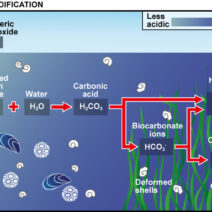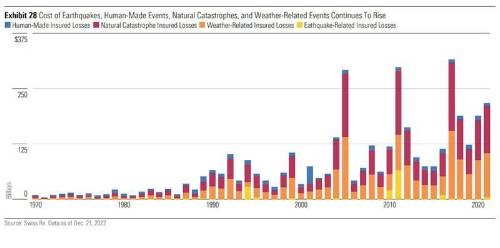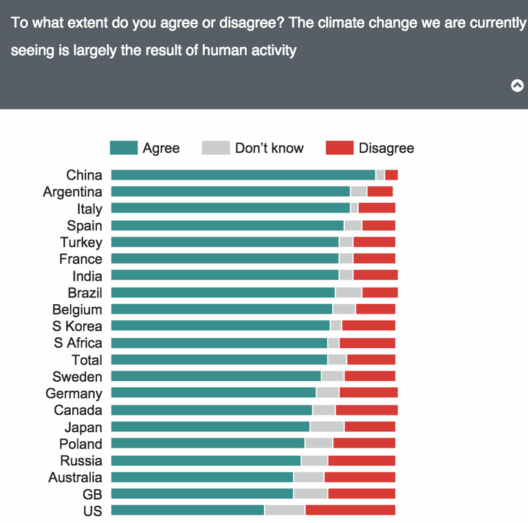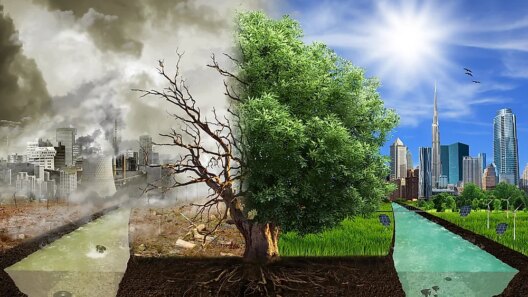Global warming has become an undeniable force shaping the planet’s ecosystems. The alarming rise in temperature, primarily due to anthropogenic emissions of greenhouse gases, exacerbates numerous environmental challenges. One of the most insidious consequences of climate change is its profound impact on biodiversity. As ecosystems undergo distressing transformations, species face unprecedented pressures that threaten their survival and the stability of their habitats.
Biodiversity refers to the variety of life on Earth, including genetic diversity, species diversity, and ecosystem diversity. It is essential for ecosystem services—natural processes that support life, such as pollination, water purification, and nutrient cycling. Healthy ecosystems foster intricate interdependencies among flora, fauna, and microorganisms. However, as global temperatures rise, these interconnections are jeopardized, leading to cascading ecological failures.
One of the most salient observations underlining the pressures of global warming on biodiversity is species migration. Many organisms are compelled to relocate to more favorable climates. Warmer temperatures often drive species poleward or to higher elevations in a bid to find suitable habitats. For example, fish species such as cod and haddock are observed moving northward in search of cooler waters. This shift disrupts existing marine ecosystems and local fishing industries that rely on these species, resulting in economic ramifications and food insecurity.
In addition to migration, climate change fosters altered phenological events—the timing of biological processes such as breeding, flowering, and migration. These shifts can misalign crucial life cycles. For instance, if a plant species flowers earlier in response to warmer temperatures while its pollinators do not adjust their activity patterns, the resulting mismatch may diminish reproduction and thereby threaten future population viability. Such instances illustrate the interconnectedness of ecosystems and the fragility that stems from disruptions caused by climate change.
Furthermore, global warming exacerbates habitat destruction. Extreme weather events, including hurricanes, wildfires, and droughts, are predicted to intensify as climate change progresses. These disturbances can devastate habitats, leading to population declines among numerous species. Forest ecosystems, for example, are particularly vulnerable; rising temperatures can instigate more frequent and severe wildfires, obliterating vast expanses of forest cover and the biodiversity they encompass. The loss of these habitats not only threatens the species that reside within them but also has far-reaching effects on global carbon sequestration—making it a critical factor in climate regulation.
Land use changes, often motivated by agricultural expansion to meet global food demands, also play a significant role in this complex interplay. Deforestation and habitat fragmentation, exacerbated by rising sea levels and extreme weather, further compromise ecosystems and their biodiversity. As habitats become isolated, species may struggle to migrate and adapt, leading to local extinctions. The International Union for Conservation of Nature reports that approximately 1 million species are currently at risk of extinction, underscoring the urgent need for conservation and management efforts that acknowledge the impacts of climate change.
Coral reefs, often referred to as the rainforests of the sea, epitomize the tragedy of biodiversity loss induced by global warming. Elevated sea temperatures cause coral bleaching, a phenomenon that occurs when corals expel the symbiotic algae living within their tissues. This relationship is crucial for corals, providing them with nutrients and their vibrant colors. When corals bleach, they become increasingly susceptible to disease, starvation, and death. The loss of coral reefs not only endangers the myriad of marine species that depend on these habitats for survival but also threatens the livelihoods of millions of people worldwide who rely on fishing and tourism related to healthy reef ecosystems.
Moreover, global warming influences the distribution of invasive species—non-native organisms that out-compete indigenous species for resources, often leading to ecological imbalances. These invasive species tend to thrive in changing environments, allowing them to colonize new territories. As native species struggle to adapt to rapid environmental changes, the presence of invasive species can streamline their decline and accelerate biodiversity loss. The introduction of invasive species often has not just ecological implications but also socio-economic consequences as they can adversely affect agriculture, fisheries, and public health.
Climate change’s influence on biodiversity engages us in a moral discourse about stewardship and responsibility. We must contend with the reality that human activity is at the core of the biodiversity crisis and global warming. A critical examination of our consumption patterns, energy production methods, and land management practices is imperative as we confront these interconnected challenges. By implementing sustainable practices and innovating green technologies, we can mitigate our impact and contribute to the preservation of Earth’s diverse life forms.
Addressing the biodiversity crisis requires coherent and collaborative conservation strategies. The establishment of protected areas, habitat restoration initiatives, and biodiversity corridors can help preserve endangered species and their habitats. Engaging local communities in conservation efforts is also crucial. Indigenous knowledge and practices can enhance biodiversity management, reinforcing the notion that effective environmental stewardship is a collective responsibility.
As we grapple with the stark realities of climate change, remembering the profound interdependencies among all living organisms is essential. The loss of biodiversity signals a degradation of the systems that support life itself. As stewards of the planet, it is not only our duty to protect the multitude of species that share our world but also to safeguard the ecological balance essential for our own survival. The battle for biodiversity is intrinsically linked to our fight against global warming, and it is a call to action that we cannot afford to ignore.







